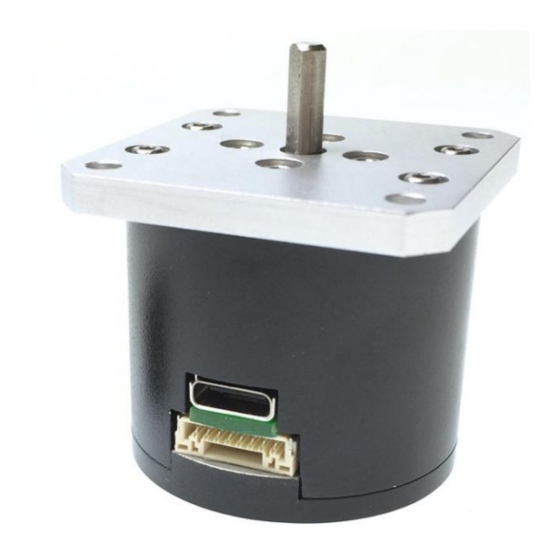
114 Southeast Parkway Ct.
Ste 160
Franklin, TN 37064
Tel: 615/595-6665
Fax: 615/595-6610
Torque-speed performance
The SUM-40 uses a unique internal drive mechanism that features high direct drive torque and
true zero-power hold. The motor does not have a traditional "stall torque" in that the maximum
torque does not increase linearly as the max speed goes to zero. The full torque-speed plot is
shown below.
External torque loads above 100 mNm should not be applied to the system, as this may cause
backdriving. Backdriving the motor may reduce the overall life of the motor. A backdriving load
is distinguished from a frictional load in that a backdriving load attempts to cause motion on the
motor output shaft, whereas a frictional load simply resists motion on the motor output shaft.
Temperature limitations
The SUM-40 motor is designed as a precision positioning device. As such, it is not capable of
running at a 100% duty cycle. An internal temperature sensor in the control electronics monitors
the internal device temperature, and will not allow operation if the internal temperature exceeds
80 C. The external case does not have an integrated temperature sensor, but should not be
allowed to exceed 55 C. Refer to the programming documentation for information on querying
the internal temperature of the SUM-40. Many factors determine the temperature of the SUM-40,
including duty cycle, mounting conditions, torque load, and external environmental temperature.
The maximum duty cycle for a particular application is best determined experimentally by
monitoring the internal and external temperature of the SUM-40 during operation in a
representative environment.
The table below gives approximate maximum continuous run-times at various rotation speeds for
an unmounted SUM-40. The table assumes no load operation. This data is provided for reference
only, and should not be considered as a specification. Actual run times before cooling down must
be determined in a specific application.
R. 171011
3
